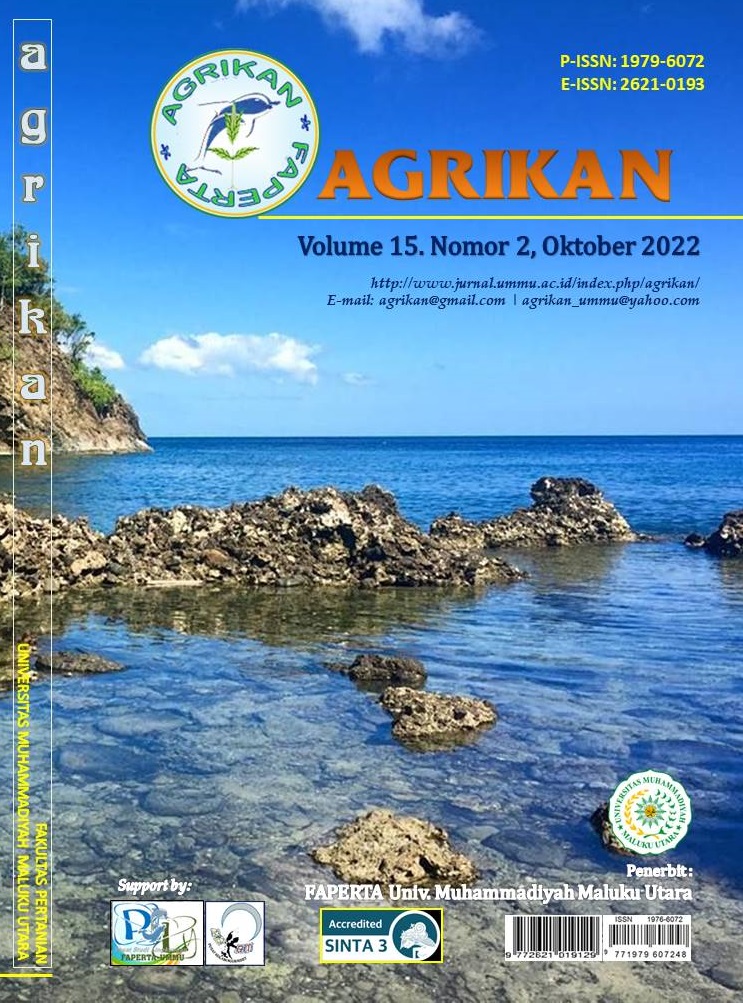Engineering Transplantation of Seagrass Thalassia hemprichii and Cyamodocea sp Using Environmentally Friendly Materials at Kastela Beach, Ternate Island
DOI:
https://doi.org/10.52046/agrikan.v15i2.1262Keywords:
Seagrass, Transplantasi, Thalassia hemprichi, Cyamodocea sp, Environmentally FriendlyAbstract
Seagrass transplants are performed to repair damaged seagrass beds or to establish new seagrass beds in areas where seagrass has yet to grow. The goal of this research was to determine the survival and growth rates of seagrass transplanted using the Sprig Anchor method, which was designed with environmentally friendly technology. This study was carried out in the coastal waters of Ternate's Kastela island from May to September 2022. The Sprig Anchor method was used in this study, which involves planting media made of strong grass ropes 2 meters long and 5 replications for each type of seagrass. Each seagrass seed is attached to the media with a soluble binder, thread. The distance between the gardens on each rope is 20 cm, so each frame contains 100 seagrass seeds. The results showed that T hemprichii seagrass transplanted using the sprig anchor method and this rope media had a 70% survival rate. This value is higher than the survival rate of seagrass Cyamodocea sp. transplanted using a similar method, which was only 53%. For 8 weeks, the daily growth rate of seagrass T hemprichii ranged from 0.023 to 0.038 cm/day, while seagrass Cyamodecea sp only ranged from 0.015 to 0.021 cm/day.
Downloads
Published
Issue
Section
License
Copyright (c) 2022 Supyan Supyan, Ardan Samman

This work is licensed under a Creative Commons Attribution 4.0 International License.

This work is licensed under a Creative Commons Attribution 4.0 International License.













